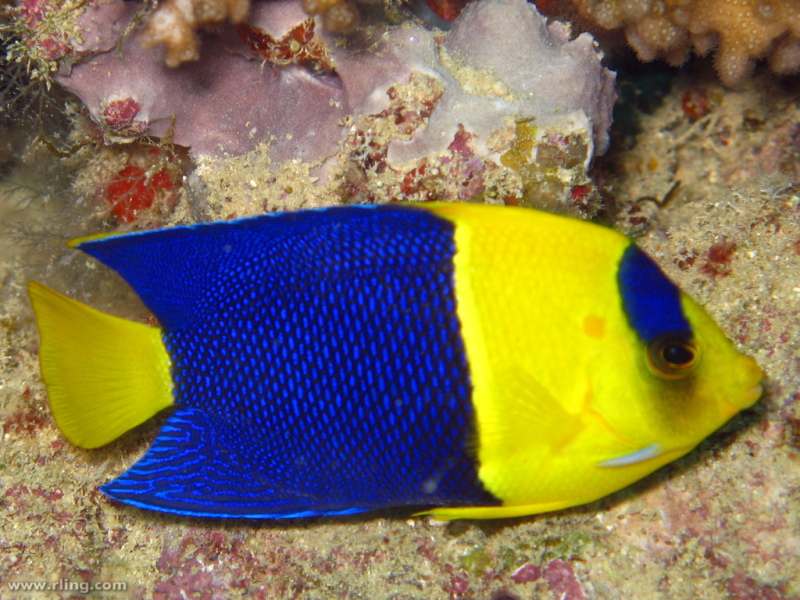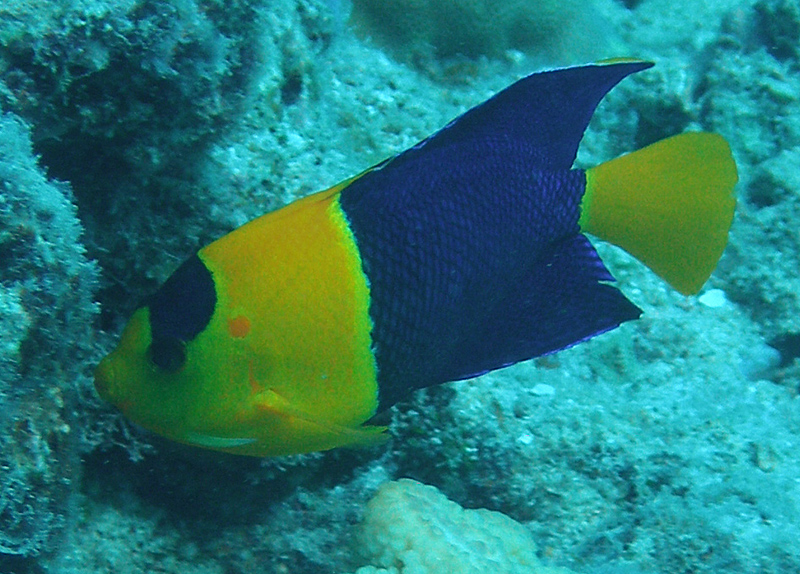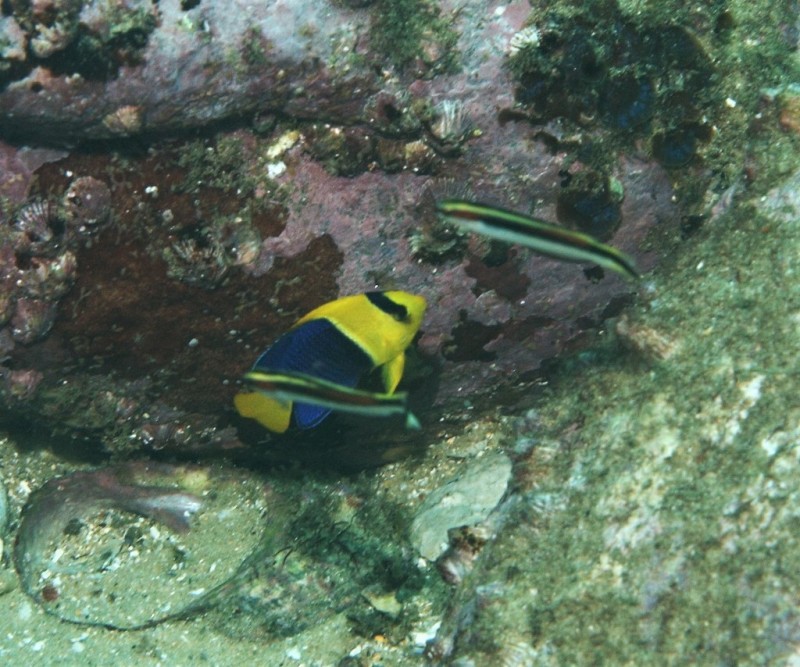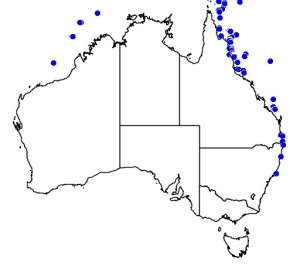�
�
�
���
Centropyge bicolor
Bicolor Angelfish
Kingdom
Animalia
Phylum
Chordata
Class
Actinopterygii
Order
Perciformes
Family
Pomacanthidae
Genus
Centropyge
Species
Centropyge bicolor
Colours
Distinguishing features
A small to medium sized fish with bright yellow front half and tail, and an deep blue rear half plus a blue "cap" over the head.
Size
- Up to 15 cm (Standard length)
Depth range
- Depth range data is not yet available.
Synonyms
Distribution
Distribution and habitat preferences
Patches of rubble adjacent to areas of coral on reef slopes and channels.
Found mainly on exposed and semi-exposed reef slopes below 5m.
Behaviour
The Bicolor Angelfish is a benthic omnivore, taking algae, crustaceans, worms and other invertebrates from the reef and rubble areas that it inhabits. This species is a haremic protogynous hermaphrodite. Males maintain a harem of 1-4 females and several immature females throughout the year, and defend the harem territory from other neighbouring males. Mating occurs during the warmer months of November to March.
Web resources
References
- Aldenhoven, J.M. (1986). Different reproductive strategies in a sex-changing coral reef fish Centropyge bicolor (Pomacanthidae), Australian Journal of Marine and Freshwater Research, 37: 353-60. LIRS catalog number 197.
- Bellwood, D.R., L. van Herwerden and N. Konow (2004). Evolution and biogeography of marine angelfishes (Pisces: Pomacanthidae), Molecular Phylogenetics and Evolution, 33: 140-155. LIRS catalog number 873.
- Eagle, J.V. and G.P. Jones (2004). Mimicry in coral reef fishes: ecological and behavioural responses of a mimic to its model, Journal of Zoology, London, 264: 33-43. LIRS catalog number 90079.
- View all references



